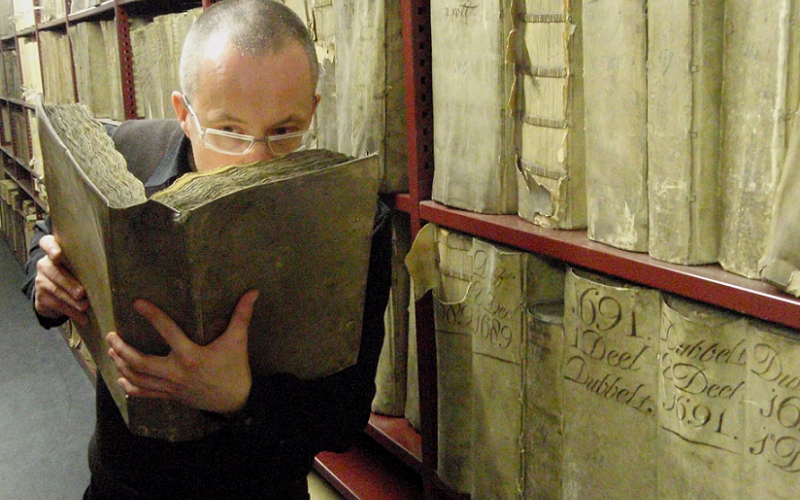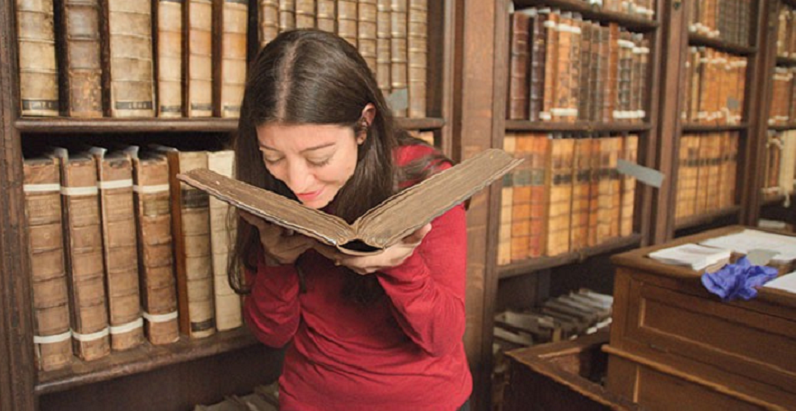
In the age of digital screens and instant gratification, antique books emerge as silent protagonists, holding within their pages not just stories, but the scent and touch of history. The evocative aroma of old paper, the delicate dance of inked letters, and the tactile embrace of worn leather can transport one to a different era, stimulating the mind in ways modern devices often fail to. But are there deeper cognitive benefits lurking within the pages of these aged treasures?
Contents
The Historic Significance of Antique Books
Antique books, often revered as tangible fragments of the past, are more than just objects of aesthetic appeal. They serve as a direct window into bygone eras, revealing cultural nuances, intellectual pursuits, and the progression of human thought. By understanding the historic significance of these aged volumes, we can better appreciate the depth and dimension they add to our cognitive experiences.
A Brief Overview of the History of Bookmaking
The art of bookmaking has evolved significantly over the centuries. Early human societies began with oral traditions, relaying stories and information from one generation to the next through spoken word. The invention of writing, on mediums such as clay tablets or papyrus scrolls, revolutionized the preservation and dissemination of knowledge.
However, the true ancestor of the modern book was the codex, a collection of bound pages, which emerged around the first century AD. The codex offered several advantages over the scroll: it was more portable, could be easily referenced, and allowed writing on both sides of the material.
The Gutenberg Press in the 15th century marked another transformative moment. This invention facilitated the mass production of books, making them more accessible to the general populace and catalyzing the spread of ideas across Europe. With each subsequent era, from the Renaissance to the Enlightenment and beyond, books played pivotal roles in shaping societies, ideologies, and intellectual movements.
Cultural Impact and Legacy of Antique Texts
Antique books offer glimpses into the cultures from which they emerged. Through them, we can understand societal norms, values, challenges, and triumphs of different epochs. For instance, a Renaissance manuscript may reveal the period’s fascination with humanism and art, while a Victorian novel could reflect the societal tensions of the industrial age.
Furthermore, these old volumes often bear the personal imprints of their past owners—annotations, dedications, or marginalia—that add layers of historical context. Such personal touches make antique books living documents, revealing not just the broader cultural sentiments but also the individual experiences of readers from bygone eras.
Their legacy extends beyond mere historical insight. Antique books have inspired modern literature, film, art, and even societal structures. By connecting with these texts, we bridge the temporal gap, drawing wisdom from the past and applying it to our contemporary contexts [1].

The Scent of Antique Books: More Than Just A Smell
For many bibliophiles, the scent of antique books is intoxicating—a unique blend of mustiness, vanilla, and often a hint of smoky wood. But this aroma is more than just a pleasant olfactory experience. It carries with it a rich tapestry of stories, evoking emotions and memories, and is deeply intertwined with the science of organic materials.
The Science Behind the Distinctive Smell
Every time we open an old tome, we’re greeted with an aroma that’s the culmination of decades or even centuries of chemical reactions. These reactions are the result of organic materials breaking down over time, combined with external environmental influences [2].
Breakdown of Organic Materials
Paper, made primarily from wood pulp, contains cellulose and lignin. As paper ages, the lignin—a complex organic polymer—breaks down, releasing volatile compounds. One of these compounds, vanillin, gives old books that distinctive vanilla-like scent. Alongside vanillin, other chemicals such as furfural and benzaldehyde (which smell like almonds) can also be released.
In addition to paper, books often contain inks, glues, and various other materials. Over time, each of these can degrade and produce their own distinctive odors, contributing to the overall scent of the book.
Presence of Specific Compounds
Environmental factors also play a role in the aroma profile of an antique book. For example, a book stored in a damp environment might develop mold, which can contribute a musty note to its scent. Other factors, such as exposure to smoke or the type of wood used in nearby shelving, can also influence the smell.
Emotional and Memory Connections to Scent
While the chemistry of an old book’s scent is intriguing, its emotional resonance runs even deeper. The olfactory system has a powerful connection to the brain’s memory centers, making scents potent triggers for recollection and emotion.
Proustian Moments: Flashbacks Triggered by Smells
The phenomenon where a particular scent evokes a sudden and vivid memory is often termed a “Proustian moment,” named after the French writer Marcel Proust. In his work “In Search of Lost Time,” the narrator is transported back to his childhood after tasting a madeleine cookie dipped in tea. Similarly, for many, the scent of an old book can trigger vivid memories of past reading experiences, quiet libraries, or even specific life events [3].
The Link Between Olfaction and Memory Recall
Scientifically, this connection is rooted in the brain’s anatomy. The olfactory bulb, responsible for processing smells, is closely connected to the amygdala and hippocampus—two areas of the brain crucial for emotion and memory. This makes scents uniquely positioned to evoke emotional memories. For book lovers, the aroma of antique books might recall the joy of discovering a new favorite novel, the comfort of a cherished reading nook, or the thrill of exploring a historic library.

Cognitive Benefits of Engaging with Antique Books
While antique books are undeniably objects of beauty and historical significance, their impact goes beyond aesthetics and cultural insights. Engaging with these venerable volumes offers a range of cognitive benefits, from multisensory stimulation to the enhancement of focus. By immersing ourselves in the tactile, visual, and olfactory experience of reading an antique book, we activate various facets of our brain, forging connections that digital or modern reading might not necessarily offer.
Brain Stimulation Through Multi-Sensory Engagement
Antique books invite us to engage with them through multiple senses. This multisensory experience not only amplifies our connection to the material but also stimulates different areas of our brain, fostering a holistic reading experience [4].
Visual Stimulation: Typography and Illustration
Antique books often feature unique typography and illustrations that differ substantially from contemporary designs. The varied fonts, ornate initials, and hand-drawn illustrations engage the visual cortex, challenging our brain to process and appreciate these distinct artistic choices. This form of visual stimulation can enhance cognitive flexibility as our brains adjust to diverse styles of presentation.
Tactile Experience: Paper Textures and Bindings
The feel of an antique book—its weight, the texture of its pages, the grain of its binding—offers a tactile richness absent in modern paperback editions or e-readers. Handling these materials stimulates the somatosensory cortex, which processes tactile sensations. Beyond the cognitive benefits, physically turning pages and feeling the heft of a book can be grounding, providing a mindful break from our fast-paced digital lives.
Olfactory Enrichment: The Scent of Age
As previously discussed, the unique scent of antique books is a result of various organic compounds breaking down over time. When we inhale this aroma, our olfactory system activates, and as mentioned earlier, this system has strong connections to memory and emotion centers in the brain.
Enhancing Concentration and Focus
The act of reading an antique book, with its delicate pages and often intricate prose, encourages a different type of reading—one that is more deliberate and focused.
The Act of Analog Reading in a Digital Age
In a world dominated by screens, the act of reading a physical, analog book is a refreshing departure. It requires our full attention, free from the distractions of notifications, pop-ups, or hyperlinks. This focused engagement can bolster our concentration skills, training our brain to immerse itself deeply in one task at a time [5].
Slower-Paced Reading for Comprehension
Given the sometimes archaic language or intricate prose found in older texts, readers often find themselves reading at a slower pace, parsing each sentence for meaning. This deliberate reading boosts comprehension and analytical skills, as readers must often infer meaning or context from the text.
Mental Time Travel: Bridging Past and Present
Antique books are artifacts from the past, and reading them is akin to embarking on a journey through time. This form of “mental time travel” offers its own set of cognitive rewards.
Immersion in Different Eras and Contexts
Engaging with a text from a different era necessitates contextual understanding. Readers naturally seek to understand the societal norms, historical events, and cultural milieu of the time, stimulating their cognitive faculties related to historical empathy and contextual reasoning.
Encouraging Historical Empathy and Perspective-Taking
Reading antique books exposes readers to viewpoints and sensibilities different from their own. This can cultivate historical empathy, allowing readers to understand and appreciate perspectives from different times and places, a skill that’s invaluable in our interconnected, globalized world.
References
[1] What the nose knows
[2] The Multisensory Experience of Handling and Reading Books
[3] Recreational book reading for promoting cognitive functioning and emotional well-being in older adults
[4] Why do old books smell so good?
[5] The science of “the smell of books”
